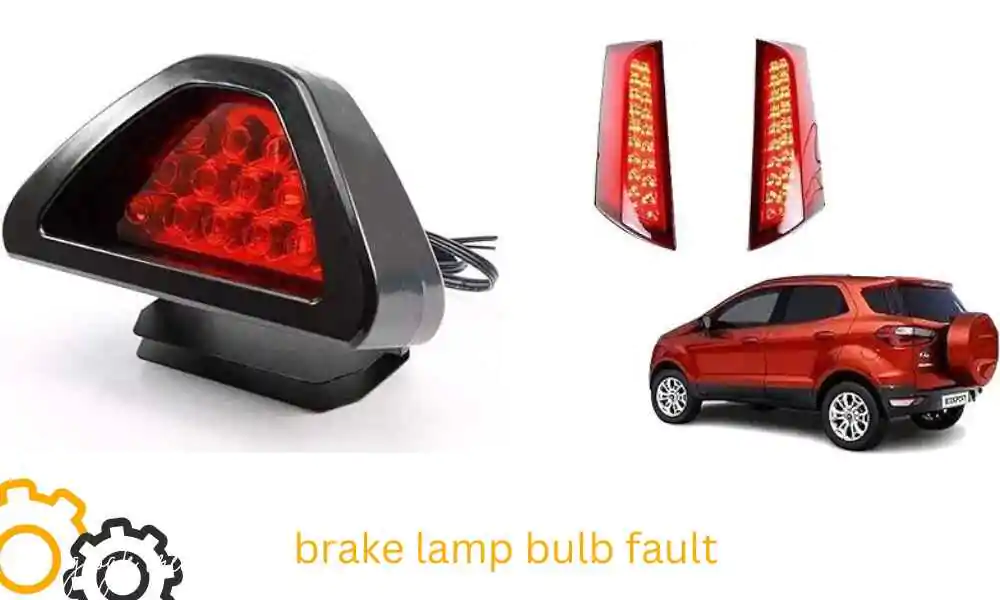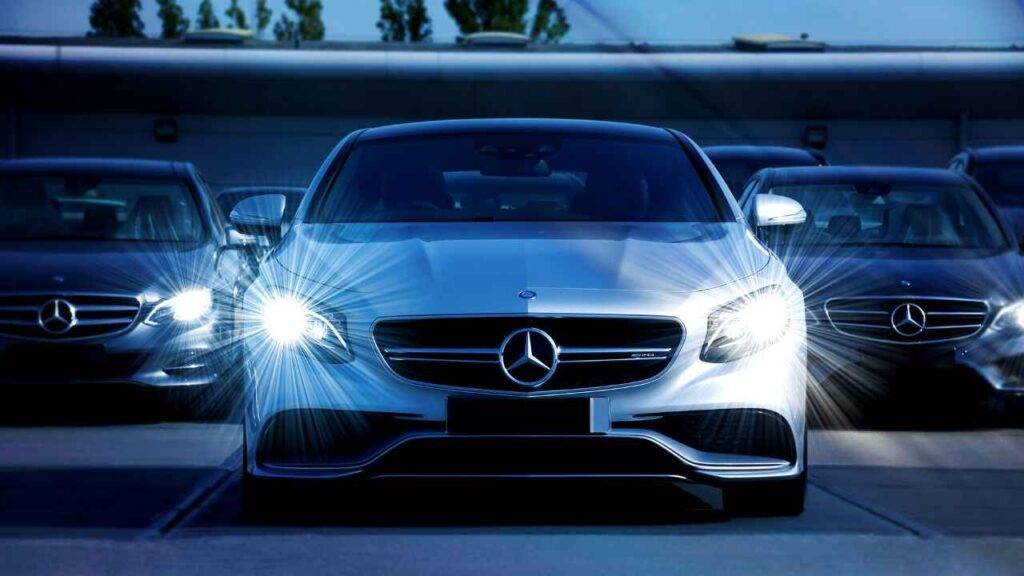Your brake lights are very important for safety when driving. They let oncoming traffic know when you’re stopping or slowing down. Dealing with a brake lamp bulb fault right away is crucial. This comprehensive guide will provide you with clear instructions and easy procedures to help you diagnose and fix brake lamp bulb defects.

What is a Brake Lamp Bulb Fault?
When one or more of your brake lights go out, there may be a brake lamp bulb malfunction. This might be the result of damaged wiring, a burned-out lightbulb, or other electrical problems. It’s critical to address this issue right away to prevent collisions and moving offenses.
Signs of a Brake Lamp Bulb Fault
- Dashboard Warning Light: A brake light issue is frequently indicated by a dashboard warning light on modern cars.
- Brake Light Not Working: While you check to see if the brake lights glow, have someone push the brake pedal.
- Error Messages: On the dashboard screen, certain vehicles exhibit error messages.
- Turn signals that blink quickly: In certain vehicles, a brake light issue may result in turn signals that blink more quickly than usual.
Common Causes of Brake Lamp Bulb Faults
- Burned-Out Bulb: A straightforward burned-out bulb is the most frequent reason.
- Bad wiring: Wires may break or sustain damage.
- Blown Fuse: The brake lights may stop functioning if a fuse blows.
- Socket Corrosion: The bulb socket may become corroded due to moisture.
- Not working properly Brake Light Switch: It is possible for the brake light switch to malfunction.
Tools and Materials Needed
- New brake light bulbs (check your car’s manual for the correct type)
- Screwdrivers (flathead and Phillips)
- Socket wrench set
- Clean cloth or gloves
- Electrical contact cleaner (if needed)
- Multimeter (for testing electrical issues)

Step-by-Step Guide to Fixing a Brake Lamp Bulb Fault
Step 1: Identify the Faulty Brake Lamp
- To activate the ignitor, move the shift lever to the “on” position without turning on the engine.
- Press the Brake Pedal: Have someone press the brake pedal while you inspect the brake lights.
- Check All Brake Lights: Look at each brake light (left, right, and center) to see which one is not working.
Step 2: Access the Brake Light Bulb
- Open the Trunk or Tailgate: Depending on your vehicle, you may need to open the trunk or tailgate to access the brake light assembly.
- Remove the Light Assembly: Use a screwdriver or socket wrench to remove the screws or bolts holding the light assembly in place.
- Disconnect the Wiring Harness: Carefully disconnect the wiring harness from the light assembly.
Step 3: Remove the Faulty Bulb
- Twist or Pull the Bulb Socket: Depending on your car model, you may need to twist or pull the bulb socket to remove it from the assembly.
- Remove the Bulb: Gently pull the bulb out of the socket. If it’s stuck, wiggle it gently to loosen it.
Step 4: Inspect the Bulb and Socket
- Check the Bulb: Look for a broken filament or dark spots inside the bulb. If it’s burned out, it needs to be replaced.
- Inspect the Socket: Look for corrosion or damage. Clean the socket with electrical contact cleaner if needed.
Step 5: Install the New Bulb
- Insert the New Bulb: Handle the new bulb with a clean cloth or gloves to avoid getting oils from your skin on it. Insert it into the socket firmly.
- Reattach the Socket: Place the socket back into the light assembly and twist or push it to secure it.
- Reconnect the Wiring Harness: Attach the wiring harness back to the light assembly.
Step 6: Test the New Bulb
- Press the Brake Pedal: Have someone press the brake pedal while you check if the new bulb lights up.
- Reassemble the Light Assembly: If the new bulb works, reattach the light assembly to the car. Tighten any screws or bolts you removed earlier.
Step 7: Check for Additional Issues
- Test Other Brake Lights: Ensure all brake lights are working correctly.
- Check Fuses: If the new bulb doesn’t work, check the car’s fuse box for a blown fuse related to the brake lights.
- Inspect Wiring: If you still have issues, use a multimeter to test the wiring for continuity and voltage.
Additional Tips for Brake Lamp Maintenance
- Regularly Check Your Lights: Periodically check all your car’s lights to ensure they are functioning properly.
- Replace in Pairs: If one brake light bulb goes out, consider replacing both bulbs at the same time. This ensures even lighting and can save time.
- Use Quality Bulbs: Invest in high-quality bulbs to avoid frequent replacements.
- Keep Spare Bulbs: Carry spare bulbs in your car for quick replacements when needed.
Read Also:
1. What Does the Brake Warning Light Mean & How To Fix It
2. 2013 honda pilot driver side headlight bulb replacement
3. Where can the w5w bulb be used
Conclusion
To drive safely, a brake lamp bulb fault must be fixed. This tutorial will help you diagnose and fix brake light issues on your own with ease. Your brake lights will perform correctly with regular maintenance and timely repairs, keeping you and other drivers safe. If issues keep coming up, you might want to think about getting expert assistance. Recall that having working brake lights is essential for road safety as well as being required by law.
How often should I check my brake lights?
Check your brake lights every few months or before long trips. Regular checks ensure safety and compliance with traffic laws.
Can I drive with a brake light out?
Driving with a faulty brake light is dangerous and illegal in many places. It’s best to fix the issue as soon as possible.
How do I know which brake light bulb to buy?
Refer to your car’s owner manual or check the existing bulb for part numbers. You can also ask for assistance at an auto parts store.
What if the new bulb doesn’t work?
If the new bulb doesn’t work, check the fuse and wiring. One tool for diagnosing electrical problems is a multimeter.
Can I replace the brake light bulb myself?
Yes, replacing a brake light bulb is a simple task that most car owners can do themselves with basic tools and instructions.
Hi, I’m Malik Suhail—an SEO expert, web designer, and passionate blogger with 2 years of experience. I specialize in crafting content that is not only informative but also tailored to meet the needs of my readers.
I write about diverse topics, always striving to simplify complex ideas and provide valuable insights that resonate with my audience. Whether it’s about SEO strategies, web design trends, or blogging tips, I am committed to delivering well-researched, practical, and easy-to-understand information.
My mission is to help readers navigate the digital world with confidence and clarity. I believe in adding value through authentic content that inspires action and delivers results.


